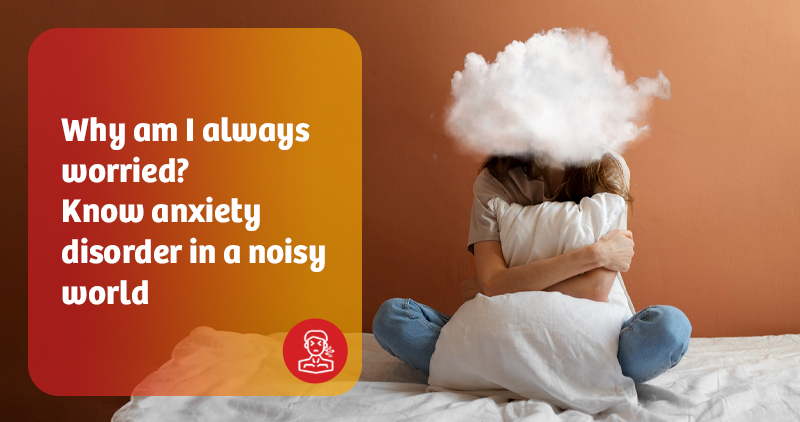

By Dr Pooja Chahwala
Consultant Psychiatrist
July 14, 2025
Have you ever felt your heart racing before a meeting? Or found yourself over thinking the smallest of issues late at night? What if we told you that these aren't just 'nerves' or 'stress', but could be signs of something —anxiety disorder, one of the most common yet misunderstood mental health conditions of our time? In today's fast-paced and hyper-connected world, we are constantly inundated with information, expectations, and pressure to keep up.
It's no wonder that anxiety has become a silent epidemic affecting millions of people around the globe. The good news is that anxiety is manageable, treatable, and, most importantly, you are not alone. Anxiety is a normal human emotion—a survival response to perceived threats. But when it becomes excessive, persistent, and interferes with daily life, it may indicate an anxiety disorder, a medical condition that requires attention and care.
Anxiety disorders are a group of mental health conditions characterised by intense, disproportionate, and uncontrollable worry or fear. These are not just occasional nervous moments; they are chronic and can affect a person's thoughts, behaviour, and physical health.
From a clinical standpoint, anxiety disorders are among the most common psychiatric conditions, yet they are often misunderstood, minimised, or overlooked.
According to the World Health Organisation (WHO), anxiety disorders are the most common mental disorders globally, affecting more than 300 million people.
When this nerve becomes compressed or irritated, it misfires, sending erratic pain signals to the brain, even in response to mild stimulation.
The most common cause of TN is compression of the trigeminal nerve root by a blood vessel near the brainstem. This constant pressure damages the protective covering of the nerve (myelin sheath), causing abnormal nerve signals.
As a psychiatrist, I often see patients who’ve been living with anxiety for years before seeking help. Symptoms can be subtle or masked, including chronic headaches, sleep disturbances, irritability, fatigue, gastrointestinal issues, or a general sense of unease. Many patients are high-functioning, making it harder for others (and sometimes themselves) to recognise the problem.
There is no single cause. Anxiety disorders arise from a complex interplay of,
The good news? Anxiety disorders are treatable. Early intervention can significantly improve outcomes.
1. Psychotherapy
2. Medications
3. Lifestyle modifications
4. Psychoeducation & support
Helping patients and families understand the illness reduces stigma, improves compliance, and promotes recovery.
Anxiety in children and teenagers
Yes, even kids can suffer from anxiety, and it is underdiagnosed.
Early intervention with psychiatrists, child psychologists, school counsellors, and family support is vital.
Myth: Anxiety is just over thinking.
Fact: Anxiety disorder is a clinical condition involving brain chemistry, not just thoughts.
Myth: Take a deep breath; everything will be okay.
Fact: People with anxiety can't just snap out of it—they need support, therapy, and in some cases, medication.
Myth: It's only for weak people.
Fact: Anxiety affects the strongest of people—from CEOs to soldiers—and it has nothing to do with willpower.
If anxiety is persistent, impacts your functioning, or causes distress, don't ignore it. Seeking help from a mental health professional early on can have a profound impact on your life.
Anxiety can feel overwhelming and even debilitating, but it does not define who you are. With the right support, many individuals can go on to lead fulfilling and successful lives. Anxiety disorders are real, common, and treatable.
As a psychiatrist at KD Hospital, I emphasise a biopsychosocial approach, addressing not only the biological aspects but also the psychological and social dimensions of the disorder. Recovery is not just about reducing symptoms; it is about regaining control, clarity, and confidence in life.